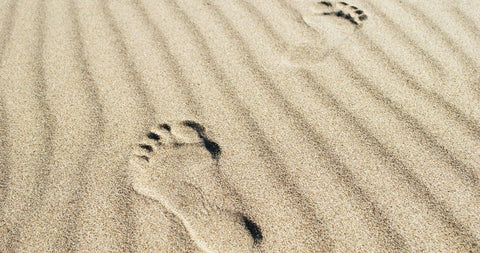
Our Top Tips On How To Prevent Foot Verrucas & Warts
Ask your friends if anyone has ever had a wart or verruca before, and maybe only a few will confess. But despite the embarrassment they bring, most of us will have one at some point during our lives* . They may be ugly and sometimes painful, but thankfully they are harmless. Even so, when you get one, you’ll probably be keen to see the back of it.
What are warts and verrucae?
Warts are small, rough lumps or growths in the skin – they range from the size of a pinprick to 1cm in diameter. Verrucae are warts on the soles of the feet, and are often characterised by tiny dots in the centre. They tend to be quite flat in appearance as they get trodden in and can form in clusters.
What are the symptoms of warts and verrucae?
Although unsightly, warts and verrucae are generally harmless and don’t come with many symptoms. They may feel uncomfortable or painful when walking.
What causes warts and verrucae?
They are caused by the human papilloma virus (HPV), and warts and verrucae generally go away by themselves – but it may take months or even years. Warts and verrucae are contagious and can spread from person to person by direct skin contact. If your skin is already damaged, wet or soft and comes into contact with damp surfaces like swimming pool changing rooms, you are at more risk of being infected. You can also spread the virus to other areas of the body. It can be difficult to know how exactly how the infection occurred due to a long incubation time.
Top tips for avoiding and managing warts and verrucae?
It’s hard to completely avoid coming into contact with HPV but you can take the following precautions to help protect against warts and verrucae:
- Don’t touch other people’s warts or verrucae.
- Don’t share towels, socks or shoes with others.
- Wear flip flops around the pool or communal changing areas.
- If you have a wart or verruca, cover it with a waterproof plaster when swimming.
- Don’t touch, scratch or pick your wart or verruca as it’s more likely to spread.
- If you do or need to touch your wart or verruca, wash your hands after.
- Change your socks daily if you have a verruca.
* Figures from Patient.info Warts and Verrucas. Accessed: July 2018.
UK/SC/0718/0031
